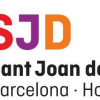
Understanding the Sturge-Weber syndrome

Description of the natural history of vasculopathies
The Sturge-Weber syndrome is characterized by the deficient development of certain blood vessels, leading to structural abnormalities; especially in the brain, skin and eyes. Three features are characteristic of this entity:
- Red/Pink birthmark or Port-wine birthmark – it can also be found in other syndromes
- Leptomeningeal angioma (Brain abnormality)
- Glaucoma (Increased intraocular pressure in the eye)
Port-wine birthmarks are caused by the dilation of the small superficial capillaries underneath our skin. These are flat and can vary in color, getting darker and thicker over time. These marks are most often found on the face of the patients and are normally unilateral, but can also be found on both sides.
The abnormal formation and growth of the capillaries that are found in the meninges (layer of specialized connective tissue that covers the brain and spinal cord for protection purposes) causes what is known as leptomeningeal angioma, and can have serious consequences such as impaired blood flow, loss of brain tissue (atrophy) and calcifications. All of these are very important predispositions to stroke-like events and normally appear unilaterally.
Stroke-like events include temporary muscle weakness, vision abnormalities, migraine headaches and seizures. Seizures are mostly unilateral (meaning they only involve one side of the brain) and are classified as focal seizures. These episodes normally start in affected people by the age of 2. Because of these events, patients with Sturge-Weber syndrome have a range of cognitive function, varying from normal intelligence to intellectual disability. Some of them can also present learning disabilities, concentration/attention deficiency and hyperactivity.
Glaucoma develops in patients with the syndrome during their infancy or early adulthood. Pressure can be so high that eyeballs can appear enlarged and bulging (exophthalmos). In about one third (33%) of the patients with Sturge-weber syndrome, accumulations of abnormal blood vessels in the eye (hemangiomas) develop at the back of the eyeball (choroid), forming a choroidal hemangioma that can lead to permanent vision loss.
These 3 characteristics of the syndrome usually appear on the same side of the face/neck, which is important to know, because if you find one, you can start investigating to find the other 2.
Prevalence of this syndrome is pretty low: 1 in every 20,000 – 50,000 children and adults.
Associated genetic defects
Sturge-Weber syndrome has been linked to the mutation of gene GNAQ. This gene is responsible for the synthesis of protein Gαq, which regulates the development and functionality of blood vessels.
The synthesis of a non-functional protein results in the inability to regulate the development of new blood vessels, leading to an abnormally increased signaling. Enhanced signaling disrupts regulations, causing abnormal and excessive amount of blood vessels and a potential situation for the appearance of vascular tumors. This regulation disruption happens before birth, vascular tumors will appear afterwards, as described in the overview of vascular tumors and malformations.
The mutation is not inherited: it is a somatic mutation, meaning that it happens during embryonic development (early), before birth. The cell that acquires the mutation will grow and divide, transmitting the mutation to the cells that derive from it. As we can observe after the child’s birth, cells that acquire the mutation are specific brain, eyes and skin cells involved in blood vessel formation. The rest of the cells of the body do not present the mutation. This situation is known as mosaicism, and the same happens in Proteus syndrome. This is the reason why patients have abnormal vessel growth in specifics parts of their body, but not in others.
Areas of interest for families
Impact of the disease
The impact of the disease on patients and families is very heavy. Vascular malformations and tumors are usually part of a larger pathological entity known as syndrome. These syndromes are the result of mutations that lead to overgrowth and uncontrolled proliferation in any tissue around the body, but there are some tissues that have predisposal to suffer this overgrowth; like skin and bone tissue. These lesions can be very apparent, leading to severe psychological issues amongst the patients.
Moreover, this overgrowth, which is usually asymmetrical (one hemibody is bigger than the other), can lead to the appearance of disabilities such as limping and patients may have to live with them for the rest of their lives.
External overgrowth may be very apparent, but the internal overgrowth of tissues (tumors) is normally benign in these syndromes, so the proliferation does not usually metastasize, but it can be life-threatening if the increased tissue compresses other important structures like the trachea, spinal cord or blocks the blood flow to other structures causing ischemia, so we have to be very careful with benign tumors, because they can reach a very considerable size.
These entities are entitled as very rare, families feel alone and helpless many times, and as mentioned above, differential diagnosis is not easy and many times this syndromes are misdiagnosed, so families have to move around through different hospitals until they find the answers they are looking for.
Treatment and prognosis
The Porto wine birthmarks are treated and with laser procedures and take some time. It is ideal to start treatment during infancy to avoid the progression of the mark. Glaucoma, seizures, migraines, endocrine abnormalities and all the rest of comorbidities associated to this syndrome are treated individually, because unfortunately there is still no cure for this syndrome.
Treatments have really improved the progression and regression of malformations and the patient’s quality of life, and they hopefully will continue to do so. Patients are diagnosed earlier than before, which is important because we can prevent seizures and other important complications of the syndrome.
Surgery may be required to remove overgrown tissue, especially if limits the patient’s day-to-day life.
Closing thoughts
The Sturge-Weber syndrome is a severe rare vasculopathy that can seriously threaten the life of the patients. Symptoms are often hard to handle and there is still very little knowledge about its genetic origin. Join Share4Rare and help us build a community of patients to share information and experiences and to boost research on this condition. Together we are stronger!
